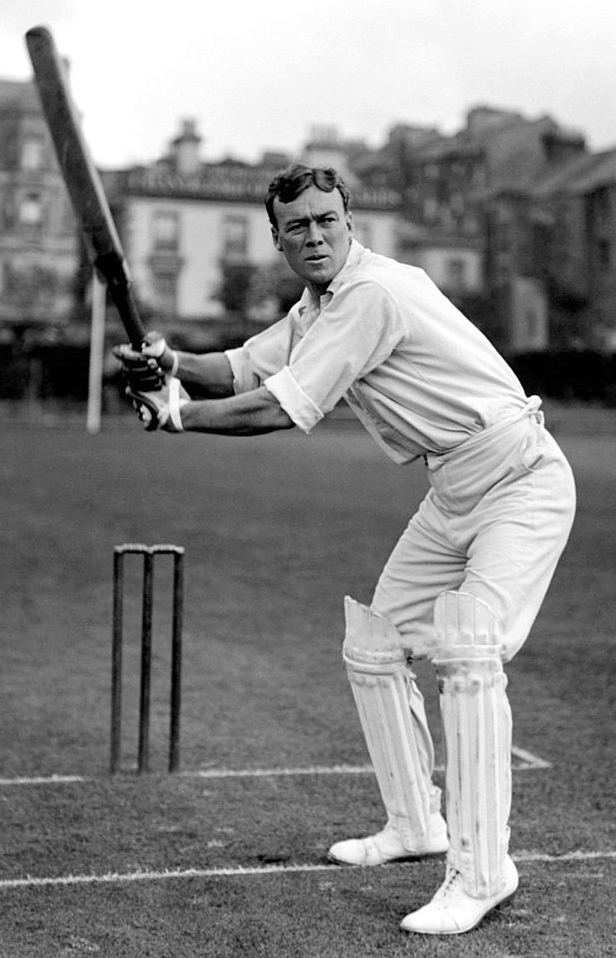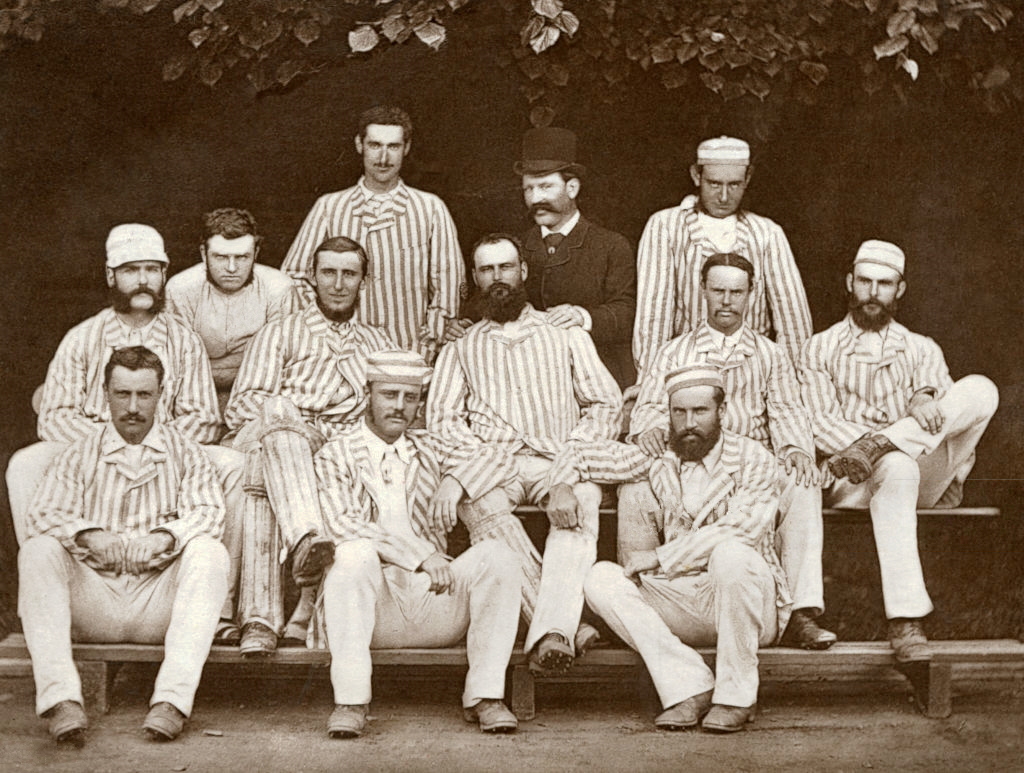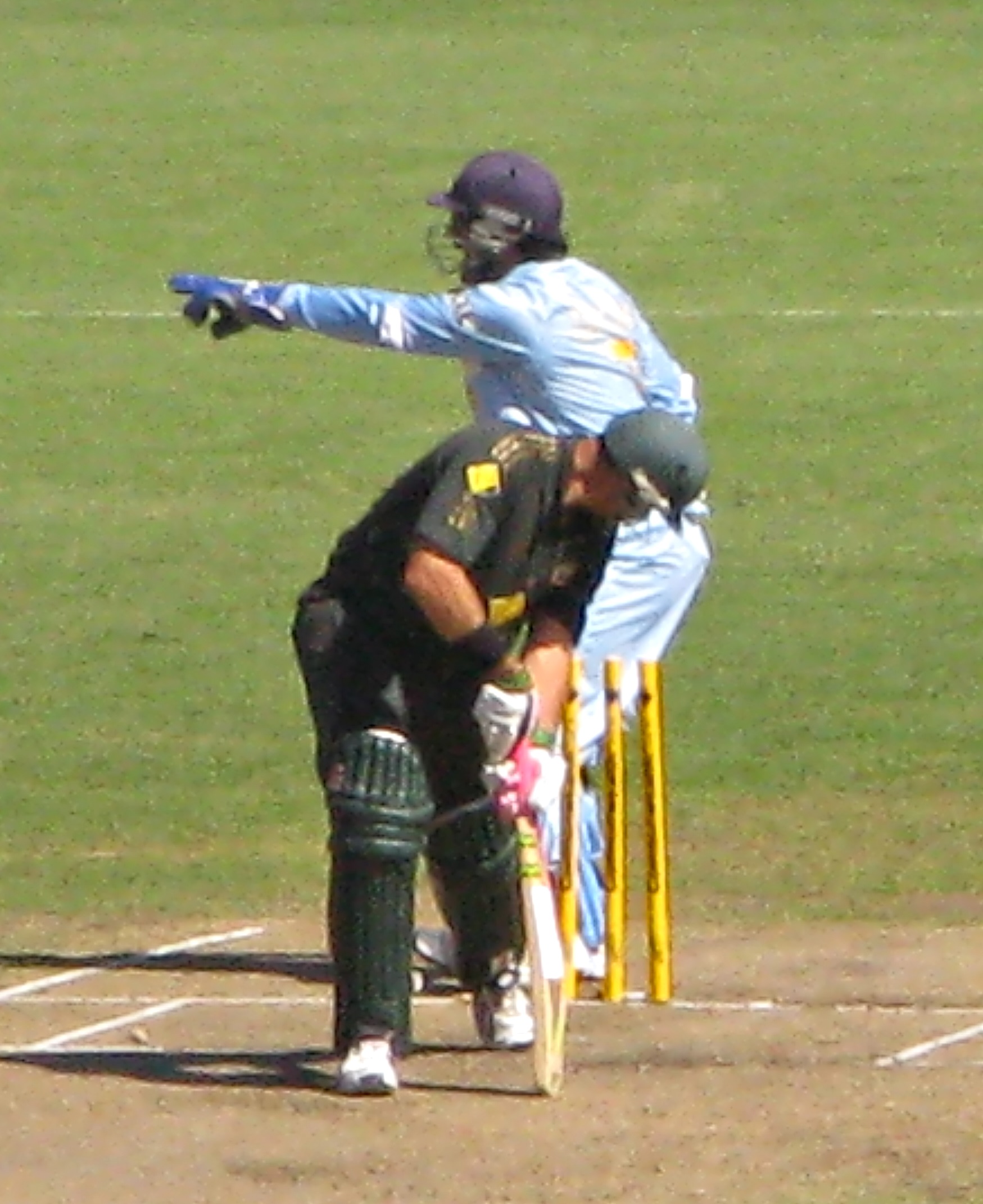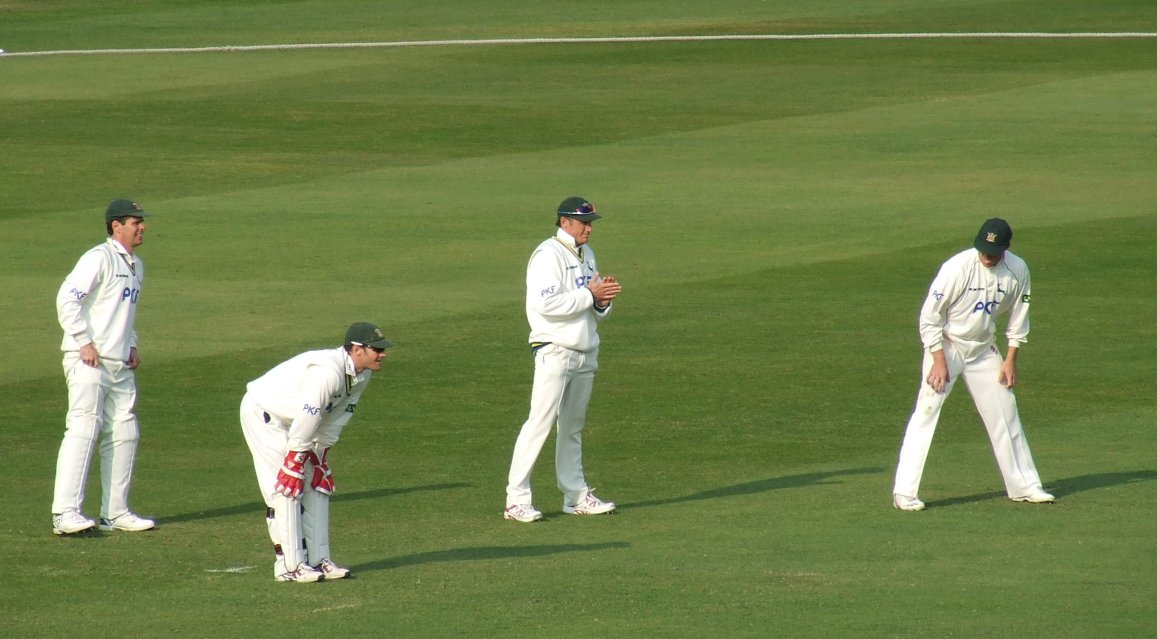|
List Of Netherlands Twenty20 International Cricketers
A T20I is an international cricket match between two teams that have official Twenty20 International status, as determined by the International Cricket Council. It is played under the rules of Twenty20 cricket and is the shortest form of the game. The Netherlands cricket team played its first T20I match on 2 August 2008, against Kenya as part of the 2008 ICC World Twenty20 Qualifier, winning the match by 19 runs. This list comprises all members of the Netherlands cricket team who have played at least one T20I match. It is initially arranged in the order in which each player won his first Twenty20 cap. Where more than one player won his first Twenty20 cap in the same match, those players are listed alphabetically by surname. Key Players :''Statistics are correct as of 6 November 2022.'' Captains See also *Twenty20 International *Netherlands national cricket team *List of Netherlands ODI cricketers *List of Netherlands first-class cricketers Notes References {{In ... [...More Info...] [...Related Items...] OR: [Wikipedia] [Google] [Baidu] |
Netherlands Cricket Team
The Netherlands national cricket team (Dutch: Nederlandse cricket team) is the men's team that represents the Kingdom of the Netherlands and is administered by the Royal Dutch Cricket Association. Cricket has been played in the Netherlands since at least the 19th century, and in the 1860s was considered a major sport in the country. Other sports – notably football – have long since surpassed cricket in popularity amongst the Dutch, but today there are around 6,000 cricketers in the Netherlands. The first national association, the forerunner of today's Royal Dutch Cricket Association, was formed in 1890 and the Netherlands achieved Associate Membership of the International Cricket Council (ICC) in 1966. The Netherlands have taken part in all eleven ICC Trophy/World Cup Qualifier tournaments, winning the competition in Canada in 2001 and finishing as runners-up twice (in 1986 and 1990). The Netherlands also participated in the 1996, 2003, 2007 and 2011 Cricket World Cups, a ... [...More Info...] [...Related Items...] OR: [Wikipedia] [Google] [Baidu] |
Bowling (cricket)
Bowling, in cricket, is the action of propelling the ball toward the wicket defended by a batter. A player skilled at bowling is called a ''bowler''; a bowler who is also a competent batter is known as an all-rounder. Bowling the ball is distinguished from ''throwing'' the ball by a strictly specified biomechanical definition, which restricts the angle of extension of the elbow. A single act of bowling the ball towards the batsman is called a ''ball'' or a '' delivery''. Bowlers bowl deliveries in sets of six, called an ''over''. Once a bowler has bowled an over, a teammate will bowl an over from the other end of the pitch. The Laws of Cricket govern how a ball must be bowled. If a ball is bowled illegally, an umpire will rule it a ''no-ball''. If a ball is bowled too wide of the striker for the batsman to be able to play at it with a proper cricket shot, the bowler's end umpire will rule it a ''wide''. There are different types of bowlers, from fast bowlers, whose primary w ... [...More Info...] [...Related Items...] OR: [Wikipedia] [Google] [Baidu] |
Netherlands Twenty20 International Cricketers
) , anthem = ( en, "William of Nassau") , image_map = , map_caption = , subdivision_type = Sovereign state , subdivision_name = Kingdom of the Netherlands , established_title = Before independence , established_date = Spanish Netherlands , established_title2 = Act of Abjuration , established_date2 = 26 July 1581 , established_title3 = Peace of Münster , established_date3 = 30 January 1648 , established_title4 = Kingdom established , established_date4 = 16 March 1815 , established_title5 = Liberation Day , established_date5 = 5 May 1945 , established_title6 = Kingdom Charter , established_date6 = 15 December 1954 , established_title7 = Caribbean reorganisation , established_date7 = 10 October 2010 , official_languages = Dutch , languages_type = Regional languages , languages_sub = yes , languages = , languages2_type = Recognised languages , languages2_sub = yes , languages2 = , demonym = Dutch , capital = Amsterdam , largest_city = capital , ... [...More Info...] [...Related Items...] OR: [Wikipedia] [Google] [Baidu] |
List Of Netherlands First-class Cricketers
First-class cricket is an official classification of the highest-standard international or domestic matches in the sport of cricket. A first-class match is of three or more days' scheduled duration between two sides of eleven players each and is officially adjudged to be worthy of the status by virtue of the standard of the competing teams. Matches must allow for the teams to play two innings each although, in practice, a team might play only one innings or none at all. The Netherlands national cricket team (Dutch language, Dutch: Nederland se cricketteam) is the team that represents Netherlands and is administered by the Royal Dutch Cricket Association. Cricket has been played in the Netherlands since at least the 19th century, and in the 1860s was considered a major sport in the country. Other sports – notably Association football, football – have long since surpassed cricket in popularity amongst the Dutch, but today there are around 6,000 cricketers in the Netherlands. The ... [...More Info...] [...Related Items...] OR: [Wikipedia] [Google] [Baidu] |
List Of Netherlands ODI Cricketers
Since Netherlands' first One Day International (ODI) in 1996, 82 players have represented the team. A One Day International (ODI) is an international cricket match between two representative teams, each having ODI status, as determined by the International Cricket Council (ICC). An ODI differs from Test matches in that the number of overs per team is limited, and that each team has only one innings. The list is arranged in the order in which each player won his first ODI cap. Where more than one player won his first ODI cap in the same match, those players are listed alphabetically by surname. Key Players :''Statistics are correct as of 2 April 2023.'' Notes See also *One Day International *Netherlands national cricket team *List of Netherlands Twenty20 International cricketers *List of Netherlands first-class cricketers *Dutch national cricket captains This is a list of all the cricketers who have captained the Netherlands in an official international match. This includ ... [...More Info...] [...Related Items...] OR: [Wikipedia] [Google] [Baidu] |
South Africa National Cricket Team
The South Africa national cricket team, also known as the Proteas, represents South Africa in men's international cricket and is administered by Cricket South Africa (CSA). South Africa is a full member of the International Cricket Council (ICC), with Test, One-Day International (ODI) and Twenty20 International (T20I) status. Its nickname derives from South Africa's national flower, ''Protea cynaroides'', commonly known as the "King Protea". South Africa entered first-class and international cricket at the same time when they hosted an England cricket team in the 1888–89 season. Initially, the team was no match for Australia or England but, having gained experience and expertise, they were able to field a competitive team by the first decade of the 20th century. The team regularly played against Australia, England and New Zealand through to the 1960s, by which time there was considerable opposition to the country's apartheid policy. The ICC imposed an international ban on ... [...More Info...] [...Related Items...] OR: [Wikipedia] [Google] [Baidu] |
New Zealand National Cricket Team
The New Zealand national cricket team represents New Zealand in men's international cricket. Named the Black Caps, they played their first Test in 1930 against England in Christchurch, becoming the fifth country to play Test cricket. From 1930 New Zealand had to wait until 1956, more than 26 years, for its first Test victory, against the West Indies at Eden Park in Auckland. They played their first ODI in the 1972–73 season against Pakistan in Christchurch. Kane Williamson is the current captain of the team in T20I’s, Tim Southee is the current test captain as Kane Williamson stepped downs as captain in December 2022. The national team is organized by New Zealand Cricket. The New Zealand cricket team became known as the Blackcaps in January 1998, after its sponsor at the time, Clear Communications, held a competition to choose a name for the team. This is one of many national team nicknames related to the All Blacks. As of 25 November 2022, New Zealand have played 1429 ... [...More Info...] [...Related Items...] OR: [Wikipedia] [Google] [Baidu] |
Australia National Cricket Team
The Australia men's national cricket team represents Australia in men's international cricket. As the joint oldest team in Test cricket history, playing in the first ever Test match in 1877, the team also plays One-Day International (ODI) and Twenty20 International (T20I) cricket, participating in both the first ODI, against England in the 1970–71 season and the first T20I, against New Zealand in the 2004–05 season, winning both games. The team draws its players from teams playing in the Australian domestic competitions – the Sheffield Shield, the Australian domestic limited-overs cricket tournament and the Big Bash League. The national team has played 845 Test matches, winning 401, losing 227, drawing 215 and tying 2. , Australia is ranked first in the ICC Test Championship on 128 rating points. Australia is the most successful team in Test cricket history, in terms of overall wins, win–loss ratio and wins percentage. Test rivalries include The Ashes (with England ... [...More Info...] [...Related Items...] OR: [Wikipedia] [Google] [Baidu] |
Stumped
Stumped is a method of dismissing a batsman in cricket, which involves the wicket-keeper putting down the wicket while the batsman is out of his ground. (The batsman leaves his ground when he has moved down the pitch beyond the popping crease, usually in an attempt to hit the ball). The action of stumping can only be performed by a wicket-keeper, and can only occur from a legitimate delivery (i.e. not a no-ball), while the batsman is not attempting a run; it is a special case of a run out. Being "out of his ground" is defined as not having any part of the batsman's body or his bat touching the ground behind the crease – i.e., if his bat is slightly elevated from the floor despite being behind the crease, or if his foot is on the crease line itself but not completely across it and touching the ground behind it, then he would be considered out (if stumped). One of the fielding team (such as the wicket-keeper himself) must appeal for the wicket by asking the umpire. The appea ... [...More Info...] [...Related Items...] OR: [Wikipedia] [Google] [Baidu] |
Caught (cricket)
Caught is a method of dismissing a batsman in cricket. A batsman is out caught if the batsman hits the ball, from a legitimate delivery, with the bat, and the ball is caught by the bowler or a fielder before it hits the ground. If the ball hits the stumps after hitting the wicket-keeper, If the wicket-keeper fails to do this, the delivery is a "no ball", and the batsman cannot be stumped (nor run out, unless he attempts to run to the other wicket.) If the catch taken by the wicket-keeper,then informally it is known as caught behind or caught at the wicket. A catch by the bowler is known as caught and bowled. This has nothing to do with the dismissal bowled but is rather a shorthand for saying the catcher and bowler are the same player. (The scorecard annotation is usually ''c. and b.'' or ''c&b'' followed by the bowler's name.) Caught is the most common method of dismissal at higher levels of competition, accounting for 36,190 Test match dismissals between 1877 and 2012, wh ... [...More Info...] [...Related Items...] OR: [Wikipedia] [Google] [Baidu] |
Fielding (cricket)
Fielding in the sport of cricket is the action of fielders in collecting the ball after it is struck by the striking batter, to limit the number of runs that the striker scores and/or to get a batter out by either catching a hit ball before it bounces, or by running out either batter before they can complete the run they are currently attempting. There are a number of recognised fielding positions, and they can be categorised into the offside and leg side of the field. Fielding also involves preventing the ball from going to or over the edge of the field (which would result in runs being scored by the batting team in the form of a boundary). A ''fielder'' or ''fieldsman'' may field the ball with any part of his body. However, if while the ball is in play he wilfully fields it otherwise (e.g. by using his hat), the ball becomes dead and five penalty runs are awarded to the batting side, unless the ball previously struck a batter not attempting to hit or avoid the ball. ... [...More Info...] [...Related Items...] OR: [Wikipedia] [Google] [Baidu] |
Bowling Average
In cricket, a player's bowling average is the number of runs they have conceded per wicket taken. The lower the bowling average is, the better the bowler is performing. It is one of a number of statistics used to compare bowlers, commonly used alongside the economy rate and the strike rate to judge the overall performance of a bowler. When a bowler has taken only a small number of wickets, their bowling average can be artificially high or low, and unstable, with further wickets taken or runs conceded resulting in large changes to their bowling average. Due to this, qualification restrictions are generally applied when determining which players have the best bowling averages. After applying these criteria, George Lohmann holds the record for the lowest average in Test cricket, having claimed 112 wickets at an average of 10.75 runs per wicket. Calculation A cricketer's bowling average is calculated by dividing the numbers of runs they have conceded by the number of wickets t ... [...More Info...] [...Related Items...] OR: [Wikipedia] [Google] [Baidu] |








